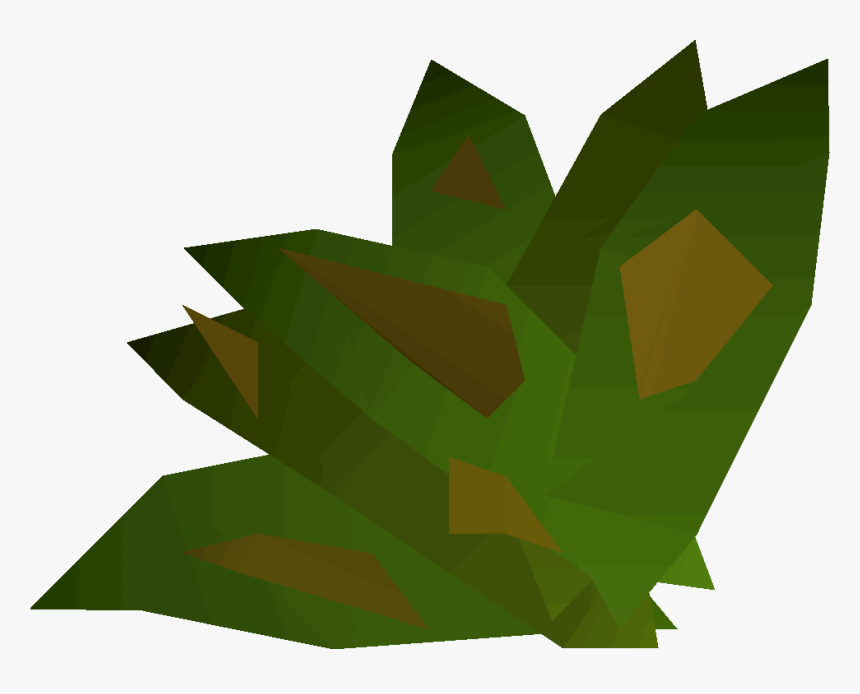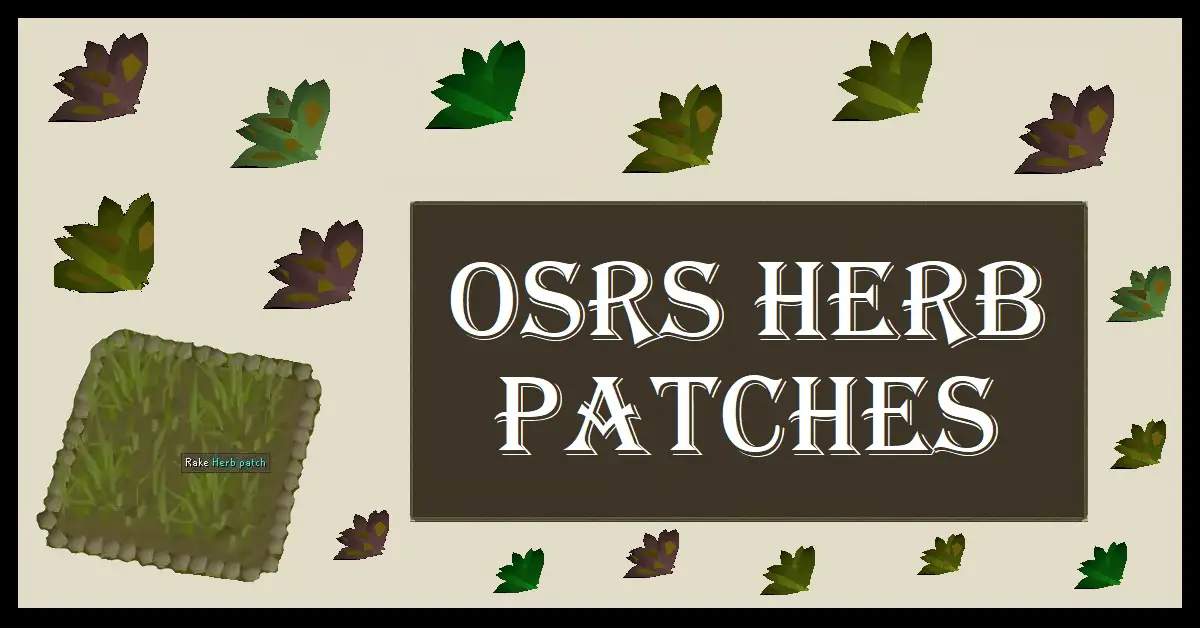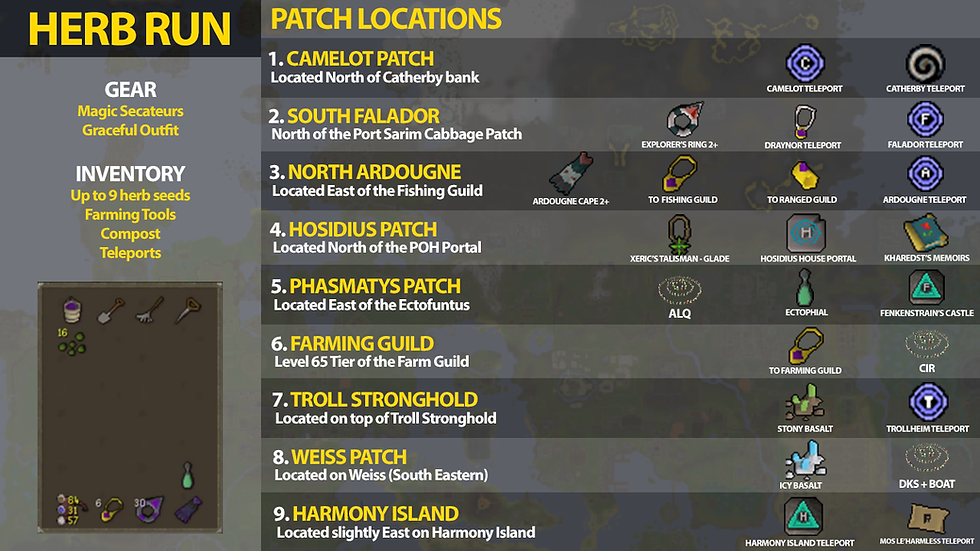Alright adventurers, listen up! If you're diving into the world of OSRS (Old School RuneScape) and want to master the art of herblore, then you're in the right place. The OSRS herb patch is not just a random feature in the game—it's a goldmine (literally and figuratively) waiting to be unlocked. Whether you're a seasoned player or a newbie trying to level up those farming skills, this guide will help you get the most out of your herb-growing endeavors. So grab your spade, and let's dig in!
Now, before we dive deep into the nitty-gritty, let’s talk about why the OSRS herb patch matters. In the world of RuneScape, herbs are like the currency of potion-makers. They're essential for crafting life-saving concoctions that can boost your stats, heal your wounds, or even resurrect you from the brink of defeat. And where do these magical herbs come from? You guessed it—your very own herb patch!
So, whether you're aiming to become the next big-time herb tycoon or simply want to save some cash by growing your own supplies, mastering the OSRS herb patch is a must. Let’s break it down step by step, so you can farm like a pro and reap those sweet rewards.
Table of Contents
- What is OSRS Herb Patch?
- Benefits of Growing Herbs in OSRS
- Types of Herb Patches in OSRS
- How to Start Your Herb Patch
- Common Herb Pests and Diseases
- Herb Patch Management Tips
- Best Herbs to Grow in OSRS
- Herb Farming Strategies for Beginners
- Profitability of Herb Farming
- Conclusion: Your Next Steps
What is OSRS Herb Patch?
Let’s start with the basics. The OSRS herb patch is essentially your personal plot of land where you can grow herbs. These patches are scattered across the game world, and each one has its own unique features and requirements. Think of it as your personal garden in the digital realm, but instead of roses or sunflowers, you’re cultivating magical herbs that can be sold or used for potion-making.
Herb patches are part of the Farming skill in OSRS, which means you’ll need to invest some time leveling up this skill to unlock more advanced herbs. But trust me, the effort is worth it. As you progress, you’ll gain access to rarer and more valuable herbs, making your patch a potential goldmine.
Benefits of Growing Herbs in OSRS
Growing herbs isn’t just about having a green thumb in the game world. There are several benefits that make herb farming a lucrative venture:
- Profit Potential: Herbs are in high demand in the OSRS market. Selling them can earn you a tidy profit, especially if you focus on rarer herbs.
- Self-Sufficiency: If you’re into potion-making, having your own herb patch means you won’t have to rely on buying herbs from other players, saving you money in the long run.
- Skill Gains: Farming herbs contributes to your overall Farming level, which opens up new opportunities and features in the game.
- Community Engagement: Herb farming is a great way to connect with other players who share your interests. You can trade tips, form guilds, or even participate in herb-related events.
Types of Herb Patches in OSRS
Understanding the Different Patches
Not all herb patches are created equal. In OSRS, you’ll encounter various types of patches, each with its own set of challenges and rewards:
- Basic Herb Patch: Perfect for beginners, these patches allow you to grow common herbs like Guam leaf and Marrentill.
- Advanced Herb Patch: Once you’ve leveled up your Farming skill, you can unlock patches that support rarer herbs like Avantoe and Kwuarm.
- Elite Herb Patch: For the truly dedicated farmers, elite patches offer the chance to grow the most valuable herbs in the game, such as Snapdragon and Lantadyme.
Each patch has its own requirements, so make sure you’re prepared before you dive in. You’ll need the right tools, seeds, and farming supplies to ensure a successful harvest.
How to Start Your Herb Patch
Step-by-Step Guide to Herb Patch Success
Starting your herb patch might seem daunting at first, but with the right approach, it’s a breeze. Here’s how you can get started:
- Choose Your Patch: Find a herb patch location that suits your needs. Popular spots include Falador and Catherby.
- Prepare the Soil: Use a spade to till the soil and make it ready for planting. Don’t forget to remove any weeds or debris.
- Plant Your Seeds: Once the soil is prepared, plant your herb seeds. Make sure you’re using the right type of seeds for your patch level.
- Maintain Your Patch: Regularly check your patch for pests and diseases. Use compost or supercompost to boost growth.
- Harvest Your Herbs: When your herbs are fully grown, harvest them and start the process again. The more you farm, the better you’ll get!
Common Herb Pests and Diseases
Just like in real life, your OSRS herb patch isn’t immune to pests and diseases. Here are some common issues you might encounter and how to deal with them:
- Pests: Aphids and other critters can wreak havoc on your herbs. Use a pest killer to keep them at bay.
- Diseases: Fungal infections and other diseases can stunt growth or even kill your plants. Apply compost or supercompost to improve soil health.
Regular maintenance is key to keeping your patch healthy and productive. Don’t neglect your plants, or you might end up with a barren wasteland instead of a thriving garden.
Herb Patch Management Tips
Pro Tips for Herb Patch Success
Here are some expert tips to help you maximize your herb patch potential:
- Use Supercompost: Supercompost significantly boosts growth rates and reduces the risk of pests and diseases.
- Rotate Crops: Don’t plant the same herb in the same patch repeatedly. Crop rotation helps maintain soil health and prevents nutrient depletion.
- Time Your Harvests: Pay attention to the growth cycles of your herbs. Harvesting at the right time ensures maximum yield.
- Join a Farming Guild: Collaborating with other players can provide access to exclusive patches and resources.
Best Herbs to Grow in OSRS
Not all herbs are created equal when it comes to profitability and usability. Here are some of the best herbs to grow in OSRS:
- Guam Leaf: A great starting herb for beginners, Guam leaf is easy to grow and fetches a decent price on the market.
- Kwuarm: This advanced herb is highly sought after by potion-makers and can net you a significant profit.
- Snape Grass: A rare herb that’s in high demand for its use in combat potions.
- Lantadyme: One of the most valuable herbs in the game, Lantadyme is a must-grow for serious herb farmers.
Herb Farming Strategies for Beginners
Strategies to Boost Your Farming Success
If you’re new to herb farming, here are some strategies to help you get started:
- Start Small: Don’t try to tackle elite patches right away. Begin with basic herbs and work your way up as you gain experience.
- Invest in Tools: Quality tools like a rune spade and farming potion can make a big difference in your farming efficiency.
- Join a Community: Find a farming guild or community where you can share tips and resources with other players.
- Track Market Trends: Keep an eye on the OSRS Grand Exchange to identify herbs that are in high demand and sell for a premium price.
Profitability of Herb Farming
Let’s talk numbers. Herb farming can be incredibly profitable if done right. Here’s a breakdown of the potential earnings:
- Guam Leaf: Average price of 100-200 coins per herb.
- Kwuarm: Average price of 5,000-10,000 coins per herb.
- Lantadyme: Average price of 15,000-20,000 coins per herb.
Of course, prices can fluctuate based on market demand, so it’s important to stay informed and adapt your strategy accordingly.
Conclusion: Your Next Steps
There you have it, adventurers! The OSRS herb patch is a powerful tool for anyone looking to level up their farming skills and make some serious in-game cash. By following the tips and strategies outlined in this guide, you’ll be well on your way to becoming a master herb farmer.
So what are you waiting for? Grab your spade, plant those seeds, and start reaping the rewards. And don’t forget to share your success stories in the comments below. Happy farming, and may your herbs grow tall and strong!


